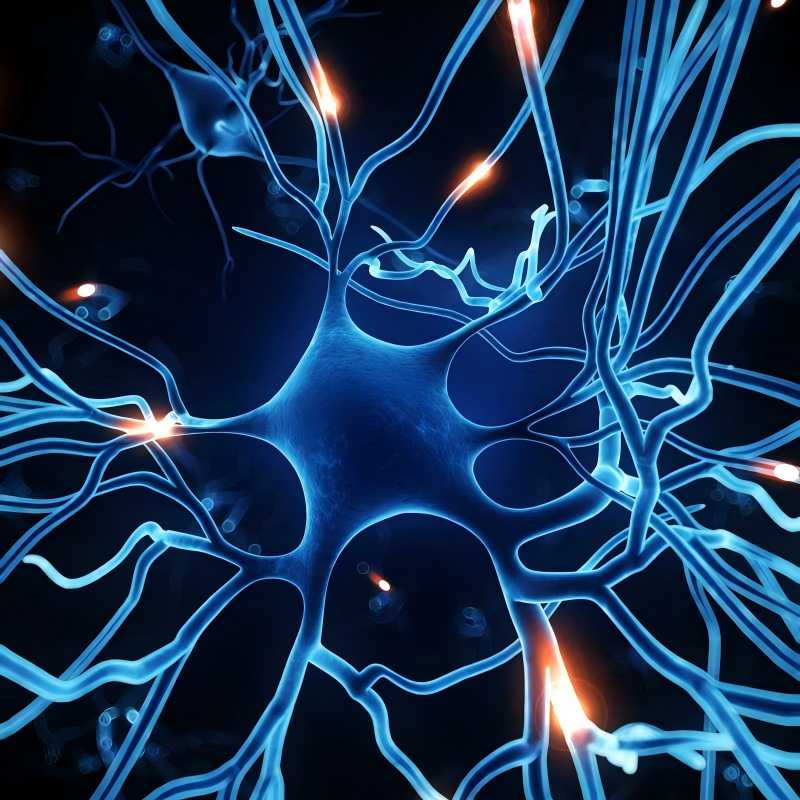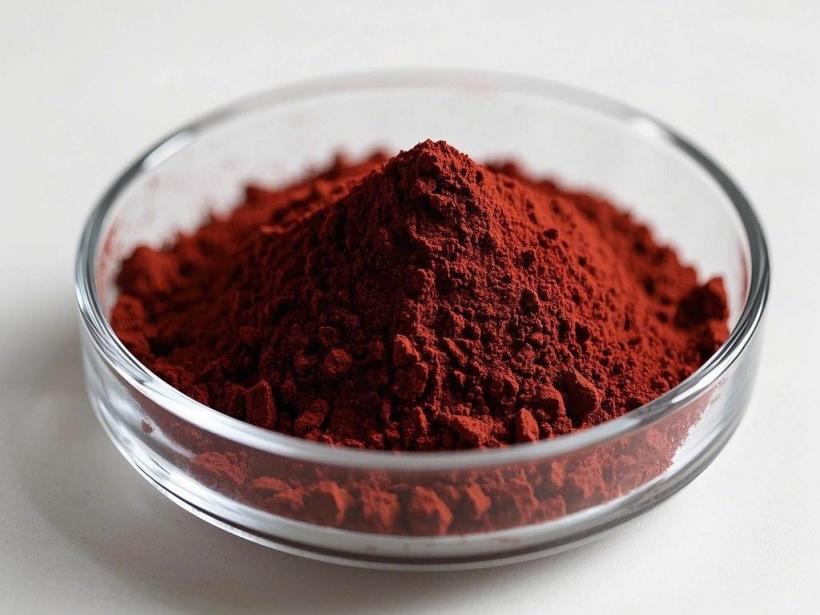リコピン:何のために良いですか?
トマトは本質的に中性で、甘くて酸っぱい、少し冷たい味がします。肝臓、胃、肺の経絡に入り、胃を強化して消化を促進し、熱を取り除き、解毒し、血液を冷やして肝臓を落ち着かせ、体液を生成して渇きを癒し、血液に栄養を与え、食欲を増進させる効果がある[1]。リコピンis the main pigment in tomatoes and is a kind of carotenoid. It is a fat-soluble functional pigment that is considered to have extremely high nutritional value. This pigment is widely found in the ripe red plant fruits of tomatoes, carrots, watermelons, papayas, guavas, etc., with the highest content in tomatoes [2].

Lycopene has the molecular formula C40H56 and is a straight-chain hydrocarbon. It is considered to be one of the plant-based nutrients with the strongest antioxidant capacity discovered so far, as it contains 11 conjugated double bonds and 2 non-conjugated double bonds in its molecular structure. Studies have found that lycopene has a good health-promoting effect in many aspects, such as anti-oxidation, protecting the nervous system, delaying aging, inhibiting tumors, reducing cardiovascular disease, liver damage, improving human immunity and delaying osteoporosis. It is a new type of functional natural pigment with great development prospects [3-5]. Research on the functional and health-promoting effects of lycopene has always been a research hotspot in the field of pharmaceutical and healthcare nutrition food development. Therefore, this paper reviews the latest research progress in recent years, with a view to providing a reference for the development of follow-up research and new pharmaceutical and healthcare products.
1 .リコピンの健康効果
1.1抗酸化効果
漢方薬は長い歴史があり、健康を保つための手段と方法を豊富に蓄積してきました。最近の研究では、人体の老化、癌、各種慢性疾患の発生は、体内のスーパーオキシドやフリーラジカルとしばしば関連していることが示されています。人間の体の年齢として、細胞代謝が減少し、いくつかの外部の物理的な損傷要因は、体によって生成されるフリーラジカルの蓄積を引き起こす' s代謝。フリーラジカルは強力な酸化力を持ち、生体膜の不飽和脂質の過酸化を引き起こし、過酸化脂質を形成し、代謝産物マロンジアルデヒドを生成する。後者は、タンパク質、ペプチド、または脂質と重合して架橋し、正常な代謝を終了させ、それによって老化プロセスに変性変化を引き起こす[7]。
リコピン粉最も抗酸化力の高い多価不飽和炭化水素です。それは物理的および化学的手段によって体内のフリーラジカルを除去し、脂質過酸化の発生を抑制し、正常な細胞代謝を維持し、老化を防止し、遅らせることができます。luojinfengら[8]は、リコピンがフリーラジカルを除去し、スーパーオキシドジスムターゼ(sod)の活性を高め、老化を遅らせる上で重要な役割を果たすことを発見しましたグルタチオンのペルオキシダーゼ(gsh-px)、およびマロンジアルデヒド(mda)の含有量を減少させる。peng liangら[9]は、人体に対するリコピンの抗酸化作用を調べた。試験群と対照群のボランティアの血清mda値は、それぞれ4.06 nmol・ml-1と3.61 nmol・ml-1で、11.03%減少した。sod活性はそれぞれ90.7 u・ml-1と96.7 u・ml-1で6.80%増加した。gsh-pxの活性は122.6 nu・ml-1と136.9 nu・ml-1で、それぞれ11.74%増加しており、リコピンが人体に対して顕著な抗酸化作用を持つことを示している。zhengら[10]は、血液透析(血液透析、mhd)患者の鉄の静脈内に誘導される酸化ストレス状態に対するリコピンの介入効果を調査し、リコピンがこの酸化ストレス状態を有意に減少させることを発見した。huら[11]ラットのt10挫傷脊髄損傷後のミトコンドリア機能障害およびアポトーシスに対するリコピンの抗酸化作用を評価し、リコピンが脊髄損傷患者の総抗酸化能力を改善し、脊髄損傷に対する一定の神経保護効果を有することを明らかにした。
yonarら[12]は、血液学的パラメータおよび酸化剤/酸化防止剤の状態を評価することにより、鯉のトリクロロフォン誘発毒性に対するリコピンの改善効果を研究した。その結果、リコピンの添加が、魚の血液学的状態と抗酸化状態を変化させてトリクロロフォンの毒性を除去するのに役立っていることが明らかになった。ナイルティラピーナのナノ酸化亜鉛毒性に対するリコピン(lyc)およびレスベラトロール(res)の改善効果に関する研究では、その優れた抗酸化活性のおかげで、lycおよび/またはresによる治療はナノ酸化亜鉛(znonp)による酸化ストレスを効果的に緩和できることが示されました[13]。In vivo研究では、リコピン増加を抑える働き白血球、脂質peroxidationやDNAにタバコの煙(CS)によって誘導た損害減らせること超酸化物イオンdismutaseとcatalase活動、肿疡の発生が抑え壊死要因-αインターフェロン-γとinterleukin-10レベル減らすことができる。いずれも、リコピンが短期間のタバコ煙曝露モデルで優れた抗酸化作用と抗炎症作用を発揮することを示している[14]。
YANG et al. [15] found that lycopene can regulate the redox status of human retinal pigment epithelial cells through nuclear factor 2-related factors (Nrf2), inhibit intercellular adhesion molecule (ICAM-1) expression and nuclear factor (NF-κB) activation. Increased oxidative stress and inflammation may play an important role in the high mortality rate of patients with metabolic syndrome. Studies have shown that higher serum lycopene concentrations are significantly associated with a lower risk of death in patients with metabolic syndrome [16], which may be due to lycopene intake reducing oxidative stress and inflammation. RASHEED et al. [17] investigated the protective effect of lycopene on oxidative stress (OS) in acute kidney injury (AKI), found that lycopene can alleviate and prevent AKI by regulating OS and lipid peroxidation, and is a natural ingredient that can prevent nephrotoxicity caused by nephrotoxic drugs such as diclofenac.
1.2神経疾患の予防
研究によると、リコピンはアルツハイマーなどの中枢神経系に関連する疾患の予防や治療に役割を果たしている可能性があります' s病、Parkinson' s病、Huntington's disease, cerebral ischemia and epilepsy, through its antioxidant, anti-inflammatory and anti-proliferative activities. Lycopene can also improve the cognitive and memory abilities of rodents under different pathological conditions. In addition, lycopene can prevent neurotoxicity caused by monosodium glutamate, trimethyl tin, methyl mercury, tert-butyl hydroperoxide and cadmium. In some special cases, such as ethanol addiction and the dyskinesia of the mouth and face caused by haloperidol, lycopene has shown particular therapeutic effects. The mechanism is mainly neuroprotective effects such as inhibiting oxidative stress and neuroinflammation, neuroprotective effects such as inhibiting neuronal apoptosis and restoring mitochondrial function [18]. ZHANG et al. [19] experimentally found that lycopene can reduce lipopolysaccharide-induced inflammation and depressive-like behavior in animals. Lycopene was found to reduce neurocyte damage in the hippocampal CA1 region, inhibit the expression of IL-1 β and HO-1 induced by lipopolysaccharide in the hippocampus, and lower the levels of IL-6 and TNF- α in the plasma. Lycopene has therapeutic potential for learning and memory impairments in rats fed a high-fat diet [20].

酸化ストレスはアルツハイマー病の発症と進行に関与しています'の病気(ad)とその初期段階、軽度の認知障害。漢方薬では、薬効のために葛と高麗人参を併用することが多い。この組み合わせで治療された患者では、心臓、肝臓、および脳におけるスーパーオキシドジスムターゼ(sod)の活性が有意に増加し、血清過酸化脂質のレベルが低下し、認知機能が効果的に改善される[21]。酸化ストレスを抑制することで、adの症状を効果的に改善できるという研究が増えています。Alzheimer&患者#39の病気(ad)は、体内のリコピンの低濃度を持っています。リコピンは強い抗酸化力を持っていることが確認されており、酸化ストレスを減らすことができ、いくつかのアルツハイマー病で神経保護効果があることが判明しています' s疾患モデル。
He Yuan et al. [22] recruited 56 elderly patients with mild cognitive impairment to carry out a population intervention experiment with lycopene. The results showed that the lycopene group had a very significant increase in basic cognitive ability test scores (P < 0.05); at the same time, homocysteine and interleukin-6 levels were significantly reduced (P < 0.05), suggesting that lycopene intervention can enhance the cognitive function of elderly people with mild cognitive impairment. Some studies have found that lycopene can downregulate the expression of β-amyloid precursor protein in cells overexpressing the human β-amyloid precursor protein gene (APPsw), and cannot change the endogenous levels of reactive oxygen species and apoptosis in APPsw cells, but can prevent oxidative stress caused by H2O2 and copper-induced damage to APPsw cells [23].
YU et al. [24] found that supplementation with lycopene or lycopene/vitamin E can significantly improve memory deficits. The combination of lycopene and vitamin E antioxidants works in a synergistic manner and has a significant impact on preventing oxidative stress in proteinopathies. LIU et al. [25] studied the protective effect of lycopene on inflammation caused by β-amyloid in rats and found that lycopene can significantly improve cognitive impairment and reduce inflammatory damage by blocking the activation of NF-κB p65 and TLR4 expression and the production of cytokines, thereby confirming its role in reducing β-amyloid deposition in hippocampal tissue. CAO et al. [26] found that lycopene can reduce aluminum-induced damage by inhibiting oxidative stress-mediated inflammatory responses and apoptosis of rat hippocampal cells. MORSY et al. [27] found that lycopene produced a neuroprotective effect on the hippocampal body of rats poisoned by bisphenol A. The mechanism is that lycopene activates the MAPK/ERK pathway through its antioxidant effect, inhibits neuronal apoptosis, and improves learning and cognitive memory in mice.
1.3 Antitumor効果
Tumors are one of the diseases with the highest mortality rate. Currently, surgery, radiotherapy and chemotherapy are mainly used in combination with traditional Chinese medicine treatment based on syndrome differentiation to give different traditional Chinese medicine treatments. Clinical studies have found that many Chinese medicinal materials (ginseng, 黄耆, wolfberry, etc.) have good anti-tumor effects. The mechanism is that the plant polysaccharides in the medicinal materials achieve anti-tumor effects by inhibiting cell proliferation, inducing apoptosis, blocking the cell cycle, anti-new blood vessel formation, and regulating the immune system [28]. Clinical studies have shown that lycopene, due to its strong antioxidant capacity, can block gene mutations in human cells caused by external mutagens, inhibit the proliferation of cancer cells, and accelerate apoptosis of cancer cells. Therefore, lycopene has a preventive and inhibitory effect on various tumors such as gastric cancer, ovarian cancer, skin cancer, lung cancer, liver cancer, and prostate cancer [29-39].
Lycopene inhibits the expression of oncogenes and the excessive proliferation of Helicobacter pylori-infected gastric epithelial cells by inhibiting the activation of Janus kinase 1 (Jak1)/signal transducer and activator of transcription 3 (Stat3) and Wnt/β-catenin signaling in gastric epithelial cells mediated by reactive oxygen species [29]. xuら[30]は、卵巣がん細胞skov3培養細胞をリコピンで治療し、skov3細胞の増殖速度が有意に低下することを発見した(p <その結果、アポトーシス率は有意に上昇した(p <0.05)。これらのうち、bax発現の上昇とbcl-2発現の低下がアポトーシスを誘導する主な方法である。bi s . y .らは、ヒト皮膚扁平上皮がん細胞株のcolo16細胞にリコピンを投与し、細胞生存率が有意に低下したことを明らかにした。また、上皮成長因子受容体のタンパク質活性化が阻害され、糖質コルチコイド受容体の発現が亢進した。しかし、この効果は特定の腫瘍細胞に特異的である可能性がある。karenら[32]は、食事中のリコピンが紫外線誘発性表皮過形成および発がんを有意に阻害することを明らかにした。
Wang Guigang et al. [33] found in in vitro and in vivo cell experiments that lycopene has a certain inhibitory effect on the growth of non-small cell lung cancer cells in vitro and the growth of lung cancer xenografts in vivo. The mechanism may be related to lycopene blocking the cell cycle and promoting apoptosis of lung cancer cells. STICE et al. [34] found that lycopene is an effective intervention strategy and the key role of CYP2E1 induction as a molecular target, which can prevent alcoholic liver disease and hepatocellular carcinoma. Chai Xuzhe et al. [35] found that lycopene can increase the sensitivity of human osteosarcoma MG-63 cells to cisplatin, and the mechanism may be related to lycopene&#細胞周期をブロックし、アポトーシス関連遺伝子やタンパク質の発現を調節する39;の能力。

Prostate cancer is the most common cancer and the leading cause of death from cancer among men in Europe and the United States. In recent years, the incidence of prostate cancer in China has been on the rise. Abnormalities in glutathione S-transferase P1 are thought to be one of the important factors in the development of prostate cancer. Studies have found that lycopene can induce the expression of the GSTP1 gene in DU145 cells through the Nrf2/ARE pathway, thereby exerting a protective effect on prostate health [36]. TJAHJODJATI et al. found that lycopene can stimulate mitochondrial pro-apoptotic factors through endogenous pathways, increase apoptosis, inhibit insulin-like growth factors, and ultimately inhibit the development of cancer cells, thereby assisting in the treatment of prostate cancer [37]. High-dose lycopene propolis capsules can reduce the prostate index and prostate hyperplasia rate in rats with prostatic hyperplasia (P < 0.05), and increase the activity of superoxide dismutase (SOD) in the tissue (P < 0.05), thereby improving experimental prostatic hyperplasia [38]. Lycopene also alleviates testicular damage caused by benzopyrene by inhibiting oxidative stress and apoptosis, and alleviating gap junction dysfunction in testicular support cells [39].
1.4心血管および脳血管疾患の予防
心血管疾患、脳血管疾患を心血管疾患、脳血管疾患と総称し、中高年の健康を深刻に脅かしている。ダンシェンなどの伝統的な漢方薬は、心筋sodの活性を著しく高め、心筋の過剰なフリーラジカルを除去し、ミトコンドリアへのフリーラジカルの損傷を軽減し、心血管系を保護します[40]。多くの研究が、リコピンには潜在的な心保護効果があり、心血管機能と健康を維持する上で大きな利点があることを示しています[41]。petyaevらは[42]、冠動脈疾患患者の臨床試験にリコペンを適用した。被験者には1日7 mgのリコピンが補充された。実験2週目と4週目には、体内の血清リコペンがそれぞれ2.9倍と4.3倍に増えた。リコピンは体の3倍の減少を引き起こしました's IgG to Chlamydia pneumoniae, a decrease in markers of oxidative damage to inflammation, and a 5-fold decrease in oxidized low-density lipoprotein, revealing the antioxidant and anti-inflammatory functions of lycopene and demonstrating the positive effect of lycopene on the cardiovascular system.
Wen Yixian et al. [43] found through experiments that lycopene mainly reduces the production of oxidized low-density lipoprotein by affecting blood cholesterol levels, thereby reducing its damage to the vascular endothelium and maintaining the permeability of the blood-brain barrier. Indirectly, it reduces the activity of astrocytes, inhibits the phosphorylation of brain P38 protein, and reduces the secretion of interleukin, tumor necrosis factor, and nitric oxide, to exert cerebrovascular and neuronal protective effects. TREGGIARI et al. [44] studied the effects of lycopene on human umbilical vein endothelial cells by testing cell migration in vitro and found that lycopene inhibited vascular endothelial growth factor-の(VEGFA)-induced cell migration and reduced Akt phosphorylation. Lycopene administration can significantly block cardiac hypertrophy caused by pressure overload. The mechanism is that lycopene can reverse the increase in reactive oxygen species (ROS) during the hypertrophy process and delay the activation of ROS-dependent hypertrophic MAPK and Akt signaling pathways. In addition, it was observed in experiments that lycopene has a protective effect on the opening of the permeability transition pore in neonatal cardiomyocytes [45].
Lycopene can improve the damage caused by angiotensin II to vascular superoxide anions (assessed in the aorta), lipid peroxidation and antioxidant enzyme activity (measured in plasma and liver, respectively), significantly reduce the development of hypertension, and prevent cardiovascular remodeling caused by angiotensin II, but had no effect on rats with normal blood pressure [46]. SEVAL et al. [47] studied the protective effect of lycopene on aflatoxin B1 poisoning of the kidneys and heart in rats and found that the plasma urea and creatinine levels of aflatoxin B1-treated rats were elevated, while the sodium concentration was reduced. Lycopene had a protective effect against aflatoxin-induced nephrotoxicity and cardiotoxicity. Studies have found that serum uric acid plays an important role in the renin-angiotensin-aldosterone system as an intermediary between overweight/obesity and hypertension. Lycopene, as a natural antioxidant, can effectively inhibit the activity of angiotensin-converting enzyme and reduce angiotensin-ii-induced oxidative stress. Therefore, there is a significant negative correlation between serum lycopene and hypertension [48].

Lycopene can also correct lipopolysaccharide-induced oxidative stress and hypertriglyceridemia by downregulating the expression of proprotein convertase subtilisin/kexin type 9 (PCSK-9) and increasing lipoprotein lipase activity [49]. Yang Yanhui et al. [50] selected 34 hyperlipidemia patients to explore the effect of lycopene on blood lipid levels in vivo. After taking the medicine (Lycopene capsules), the levels of total cholesterol (TC) and triglycerides (TG) in the test group were significantly lower than those in the control group (P < 0.05). After taking the medicine, the levels of TC and TG in the test group were significantly lower than those before taking the medicine (P < 0.05), suggesting that lycopene has a certain effect of lowering blood lipids. SULTAN et al. [51] first discovered the molecular mechanism of the lipid-lowering activity of lycopene, that is, lycopene treatment can significantly down-regulate the expression of PCSK-9 and HMGR in the liver, and significantly up-regulate the expression of the LDL receptor in the liver. In addition, lycopene can also improve the expression of PCSK-9 under inflammatory stimulation by inhibiting the expression of inflammatory markers.
1.5骨粗しょう症を抑える
Osteoporosis is a metabolic bone disease characterized by decreased bone density. Destruction of bone microstructure and changes in non-collagenous substances in bone lead to a higher risk of fracture. This is most common in postmenopausal women. The mechanism by which the antihypertensive formula Taiping Shenghui Fang prevents osteoporosis is by increasing bone density, promoting bone formation and inhibiting bone resorption, i.e. by regulating the dual effects of osteoblasts and osteoclasts to achieve the effect of preventing osteoporosis [52]. Recent studies have shown that lycopene can also regulate bone metabolism levels in the body and has potential protective effects against bone loss.
rong huiら[53]は、リコピンの投与は、骨芽細胞の増殖、分化および石灰化に対する酸化ストレスを減少させることによって、骨粗しょう症の発生を抑制できることを発見した。costa-rodriguesら[54]は、リコピンが骨代謝の同化状態を促進し、骨芽細胞の増殖と分化を刺激し、破骨形成を阻害し、それによって骨組織の健康を改善することを発見した。ardawiらは、ovariectomized (ovx)骨粗鬆症ラットにリコピン投与を行い、リコピンがovx誘発性の骨回転を抑制し、破骨細胞分化を抑制して骨芽細胞を増加させることによって骨強度と微細構造を回復させることを観察したグルタチオンのperoxidase(gpx)、カタラーゼ(cat)、sod活性が骨強度と微細構造を回復させ、骨粗しょう症の発症を抑制します。
LIU et al. [56] studied the effect of lycopene on the type of skeletal muscle fibres in vivo and in vitro and found that lycopene can affect the activity of metabolic enzymes in muscle fibres, promote the expression of slow contraction fibres, enhancing mitochondrial respiratory capacity, and potentially exerting a beneficial effect on skeletal muscle metabolism by influencing the type of muscle fiber through oxidation. KIRIŞÇI M et al. [57] studied the effect of lycopene on acute ischemia-reperfusion injury (I/R) in rat hindlimb skeletal muscle, and found that lycopene treatment significantly reduced the levels of malondialdehyde and ischemic modified albumin in serum and tissue, suggesting that lycopene has protective activity against skeletal muscle cells in rats with I/R injury model.
2結論
Oxidative stress in the human body is considered to be one of the main causes of a range of diseases. Lycopene has strong antioxidant properties and is believed to be able to prevent and treat neurological diseases, inhibit the proliferation of tumor cells, prevent cardiovascular and cerebrovascular diseases, and inhibit osteoporosis and other related diseases by scavenging free radicals in the body and limiting or preventing active oxygen-induced DNA, lipid, and protein damage. Although some progress has been made in understanding the mechanism by which lycopene prevents various diseases, it is not yet clear, and further research and discussion is needed. There are also relatively few clinical trials on humans. It is believed that with continued research, lycopene will show even broader application prospects in the field of medicine and health products.
参考:
[1] wattanathorn j, thukham-mee w, muchimapura s,et al.潜在的な陰食品であるトマトは脳卒中を防ぐ[j]。2012年漢方、3(3):144-150。
[2]中国栄養学会。専門は栄養学(m)。^「china light industry press」(英語). china light industry press . 2013年12月19日閲覧。
[3] liang x p, ma c c, yan x j,et al。食物&科学;技術を取り入れた93:185-196 2019年です。
[4]保Huayingがいた。過去5年間におけるリコピンの薬理作用の研究[j]。2014年食品研究開発、35(19):145-147。
【5】李桂江、周俊、呉関角。リコピンの抽出とその抗酸化特性[j]。^『仙台市史』通史編1(通史編6)、22 - 23頁。
[6] bai hong, xia liying, liu ji, et al。3種類の抗酸化漢方エキス成分を配合したヒト食品試験の機能評価[j]。中国の伝統的な中国医学の基礎医学のジャーナル,2011,17(9):971-972。
[7] shen an, zou bin, deng yiqing, et al。皮膚老化の生物学的特徴と研究モデル[j]。、2018年江西汉方薬49(10):69-72。
[8] luo jinfeng, ren meiyan, chen jingxin, et al。リコピンの生理機能とその安定性の維持方法の研究[j]。」。food science, 2011, 32(19): 279-283。
[9] peng liang, zhao peng, li bin, et al。Lycopene&#人体への39;sの安全性と抗酸化作用[j]。中国公衆衛生学会誌,2012,28(11):1475-1476。
[10] zheng y, xia y, wang h, et al。血液透析患者における鉄の静脈内投与による酸化ストレスに対するリコピンの影響[j]。中国伝統医学と西洋医学の融合nephrology, 2008(5): 423-425。
[11] hu w, wang h, liu z,et al.ラットの脊髄損傷におけるリコピンの抗酸化および抗アポトーシス経路による神経保護効果[j]。神経科学手紙、642:107-112、2017年たちです
[12] yonar s m, yonar me, ayegul p,et al. cyprinus carpioにおけるいくつかの血液学的および生化学的変化に対するトリクロロホンの影響:リコピンの改善効果[j]。水産16:100246、2020してください。
[13] abdel-daim m m、eissa i am、abdeen aら。2019年Oreochromis niloticusや環境毒性は、薬理学69:44-50。
[14] campos k k d, araujo g r, martins t l, et al.タバコの煙にさらされたマウス肺におけるリコピンの抗酸化および抗炎症作用[j]。^『日本生物工学会誌』、2017年、48 - 48頁。
[15] yang p m, wu z z, zhang y q,et al ICAM - 1式NF -κB−活性化Nrf2-regulatedセルいる過程状態人的網膜颜料上皮细胞を作りか[J]。2016年生命科学は、155:94-101。
[16] han g m、meza j l、soliman g aら血清リコピンの高レベルは、メタボリックシンドローム患者の死亡率低下と関連している[j]。栄养研究2016:402-407。
[17] rasheed h a, al-naimi m s, hussien n r,et al.急性腎障害における酸化ストレスに対するリコピンの影響に関する新たな知見[j]。を発して国際学術誌「ネイチャ・フォトニックス(危篤损失科学て、10(5):113-119、2020
[18] chen d j, huang c, chen z .中枢神経系障害におけるリコピンの薬理学的効果に関するレビュー[j]。バイオ医薬品&111:791-801 2019年薬餌療法。
[19] zhang f, fu y, zhou x,et al.リポ多糖誘発性ニューロ炎症では、うつ病様行動およびヘムオキシゲナーゼ-1がリコピンによって調節される[j]。精神神経免疫学会雑誌』、2016 298:1-8。
[20] wang z, fan j, wang j,et al.ラットにおける高脂肪食誘発性認知障害に対するリコペンの保護効果[j]。神経科学手纸、2016」、「627:185-191た。
[21]張華。伝統的な中国医学と認知症患者の治療に関する研究の進展[j]。医療機器,2020,33(4):203-204。
[22] he yuan, wang ziyu, yu lixia, et al。軽度認知障害の高齢者を対象としたリコペンとビタミンeの介入に関するランダム化比較試験[j]。2017年日刊栄養、39(1):27 ~ 30日。
[23]陳W、毛L、杏Het al.Lycopene減衰β1 -42分泌を促進させ毒性を注いで細胞やCaenorhabditisエレガンス アルツハイマー病のモデル[j]。神経科学手纸、2015年までに、608:28-33た。
[24] yu l x, wang w g, pang w,et al.酸化ストレスおよびタウ過リン酸化を阻害することにより、p301l変異を発現するタウ遺伝子導入マウスでは、食事中のリコペン補充により認知能力が向上する[j]。2017年日刊アルツハイマー病"、57(2):475-482。
[25] liu c b, wang r, yi y f,et al β炎症反応-amyloid誘発NF -κBが抑制されるシグナリングchoroid叢で初期のAlzheimer' s病気ネズミか[J]。the journal of nutritional biochemistry,2017,53, 66-71。
[26] cao z, wang p, gao x,et al.リコピンは、ラットの酸化ストレスによる炎症およびアポトーシスを阻害することにより、アルミニウム誘発性海馬病変を減少させる[j]。2019年日刊無機生化学193:143-151。
[27] morsy e e、ahmed m .ラットにおけるビスフェノールaによる海馬の神経毒性および記憶障害に対するリコピンの保護作用[j]。人世&2020実験は39人(8日):12090988。
[28] wang j, yu j, hu w, et al。臨床現場における一般的な抗腫瘍漢方薬の作用機序と抗腫瘍処方の分析[j]。がん研究が进歩し、2020 18(9):884-886。
、林英鹿(JW)[29]朴B金Hリコピンtreat-ment Jak1の活性化を阻害する/ Stat3とW nt /β-cat恩は私でシグナリングおよび減衰胃の上皮细胞を作りか[J]にhyperproliferationません。栄养研究70:70-81 2019年。
[30] xu j, li y f, hu h y, in vitroでの卵巣がん細胞株skov3に対するリコピンの影響:増殖抑制およびアポトーシスの増強[j]。^「molecular and cellular probes, 2019」。molecular and cellular probes . 2019年2月26日閲覧。
[31] bi suyun, li li, xu song, et al。ヒト皮膚扁平上皮がんのcolo16細胞における重要なシグナル受容体上のリコピンの調節に関する研究[j]。中国皮膚科学会2018,51(6):421-424。
[32] karen e b, zhou x y, wang y y,et al.食餌性リコピンは、skh-1マウスを紫外線b誘発光発がんから保護する[j]。journal of drugs in dermatology: jdd,2019,18(12):1244-1254。
[33]王貴剛、董岳華、楊延軍。in vitroおよび肺がんヌードマウスの肺がん細胞の成長に対するリコピンの影響腫瘍を移植した[j]。2018年(平成30年)3月31日:ダイヤ改正。
[34]しかしc p, xia h, wang x d .トマトリコピンアルコール性脂肪肝疾患および肝細胞がん発生の予防[j]。慢性疾患トランスレーショナル、医学2018(4):211-224。
【35】柴旭哲、魏凱、王貴芳。ヒト骨肉腫細胞に対するリコピンのシスプラチンに対する感作効果とメカニズムに関する研究[j]。医学研究誌,2018,47(4):167-170。
[36]福Lijuan。前立腺がんにおけるgstp1遺伝子上のリコピンの制御機構の研究[d]。2014年、重慶医科大学教授。
[37] tjahjodjati、sugandi s、umbas rらインドネシアのヒト前立腺がん細胞におけるインスリン増殖因子1の減少による前立腺増殖抑制効果に対するリコペンの保護効果[j]。^『仙台市史』通史編、仙台市、2010年、12 - 13 -14頁。
[38] feng xuexuan, zhong zhiyong, wang yufang, et al。リコペンプロポリカプセルによるラット前立腺肥大症の改善に関する実験的研究[j]。2018年(平成30年)4月24日:ダイヤ改正。
[39]徐 A R、王 J Y、王 H y, et al.ベンゾによる精巣毒性に対するリコピンの保護効果[a]ラットにおけるピレン摂取[j]. toxicology,2019,427:152301。
[40] zhou zh, yang j .細胞のエネルギー代謝を標的とした伝統的中国医学介入による心血管疾患および脳血管疾患の治療に関する研究の進展[j]。^『仙台市史』通史館、2016年(平成28年)6月31日、658- 661頁。
[41] costa-rodrigues j、pinho o、monteiro pr r .リコピンは心血管疾患に対する有効な保護と考えられるか[j]。2017年食品化学、245:1148-1153。
[42] petyaev i m, dovgalevsky p y, klochkov va,et al.冠動脈血管疾患患者における炎症および酸化の心血管パラメータおよびマーカーに対するリコペン補充の影響[j]。食品エンce &栄养、2018年、6(6):1770-1777。
[43] wen yixian, yang weichun, shen ziyi, et al。高脂血症モデルラットにおける脳血管および神経細胞に対するリコピンの保護効果[j]。中国薬理毒性学会誌,2019,33(2):93-101。
[44] treggiari d、dalbeni a、meneguzzi aら。リコピンは、血管内皮増殖因子aによって誘導される内皮細胞の移動を阻害し、一酸化窒素の生物学的利用能を増加させる[j]。^『週刊ファミ通』2018年4月号、32 - 32 - 18頁。
[45] zeng j y, zhao j j, dong b,et al.リコピンは酸化ストレスを緩和することで過負荷誘発性心臓肥大を防ぐ[j]。journal of nutritional biochemistry,2019,66:70-78。
[46] ferreira-santos p, aparicio r, carron r, et al.アンジオテンシンiiによって誘発された高血圧を有するラットでは、リコピンを補充した食事が心血管リモデルおよび酸化ストレスを改善する[j]。^『週刊ファミ通』2018年7月号、287 -287頁。
[47] seval y, emre k, aysegul k,et al.アフラトキシンb1,induced renal and cardiac damage in rats: protective effect of lycopene[j]。^ a b c d e f g h『科学技術史』、2018年、18 - 19頁。
[48] han g m, liu p .血清リコピンの高さは、過体重または肥満成人における高血圧の有病率の低下と関連している[j]。^『日経産業新聞』2017年3月号、34- 34頁。
[49] alv i ss、ansari ia、ahmad m kら。リコピンはpcsk-9発現およびapo-ciiiを介したリポタンパク質リパーゼ活性を調節することにより、lps誘発酸化ストレスおよび高トリグリセリド血症を緩和する[j]。バイオ医薬品&2017年薬餌療法、96:1082-1093。
[50] yang yanhui, song baijie, zhu xiaojuan, et al。高脂血症患者におけるリコピンの血中脂質への影響[j]。中国臨床栄養学会誌,2007(1):43-45。
[51] sultan alvi s, ansari ia, khan i,et al.高コレステロール血症と闘うためのプロタンパク質変換酵素subtilisin/kexin 9型を標的とするリコピンの潜在的な役割[j]。^ a b c d e f g h『生物学と医学』、2017年、108 -403頁。
[52] yu dongdong, zhao danyang, yang fang, et al。閉経後骨粗鬆症の予防と治療における漢方薬化合物角ゼリーのメカニズム[j]。中国骨粗鬆症学会誌,2020,26(11):1668-1673。
[53] rong hui, xue wenli, long yanming, et al。酸化ストレス下における骨芽細胞の増殖と機能に対するリコピンの影響[j]。中国組織工学研究誌,2019,23(27):4275-4279。
[54] costa-rodrigues j, fernandes m h, pinho o, et al。the journal of nutritional biochemistry,2018,57: 26-34。
[55] ardawi ms m, badawoud m h, hassan sm, et al.閉経後骨粗鬆症モデルにおける調節機構に関連した骨量、マイクロアーキテクチャおよび強度の減少に対するリコパン治療[j]。bone,2016,83:1 77 -140。
[56] liu s q, yand d, yu l,et al.骨格筋繊維型および高脂肪食誘発酸化ストレスに対するリコピンの影響[j]。the journal of nutritional biochemistry,2020,87: 108523。
[57]霧ŞCI M B GUNERI SEYITHANOĞLU M, et al.The保護効果リコピンにネズミ/ reperfusion花柳病に重傷を負いし肢筋肉モデルか[J]。ulusal travma ve acil cerrahi dergisi = turkish journal of trauma &2020紧急手术:TJTES、26(3):351-360。


 英語
英語 フランス
フランス スペイン
スペイン ロシア
ロシア 韓国
韓国 日本
日本




